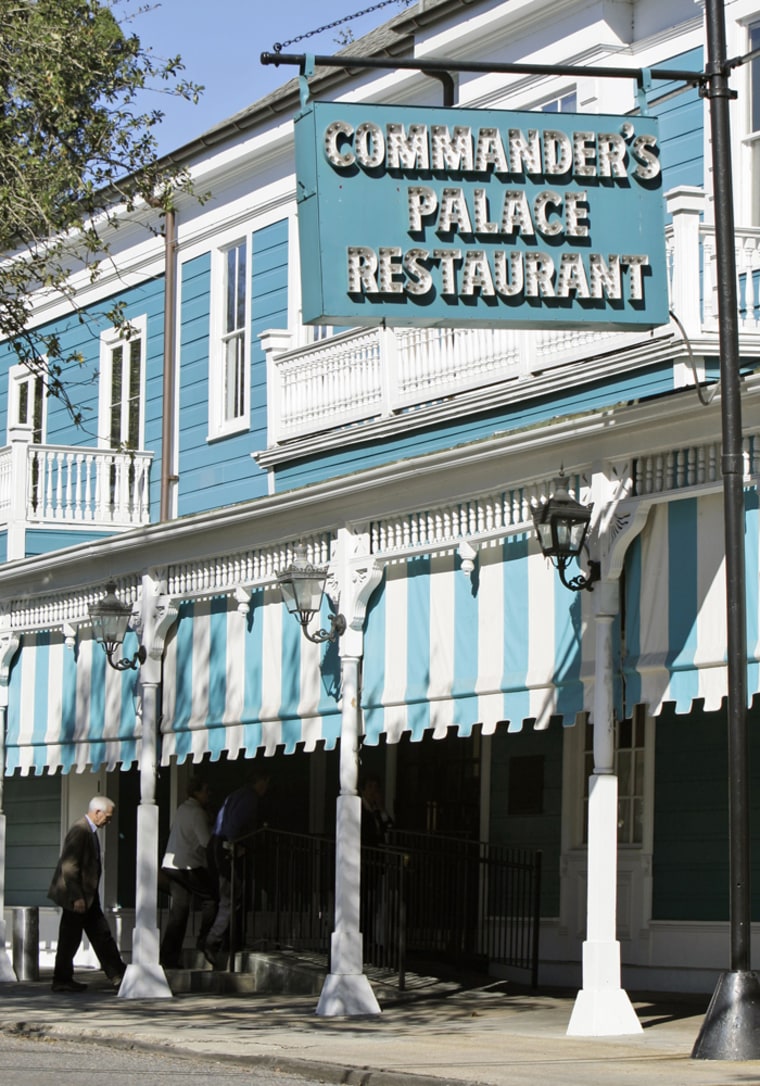When Zagat issued its last ratings for New Orleans, Commander's Palace, the turquoise Garden District landmark known for its food and ambiance, was still being pieced back together after Hurricane Katrina wrecked it.
It took 13 months and a $8.5 million renovation to restore the restaurant for business, and only one new issue of the Zagat Survey to put Commander's back on top. The guide, issued Jan. 7, lists Commander's as the most popular restaurant in New Orleans — a position it held for 17 straight years before the storm.
"I'm happy we're back," said Ti Martin, co-manager of Commander's. "But I'm also glad to see so many other New Orleans restaurants back. There are some darn good ones here and a lot of people who work very hard to make sure they stay that way."
The Zagat Survey covers 704 New Orleans restaurants, nightspots and hotels. Surveyors found 97 percent of their favorite restaurants back in business.
Almost 4,000 people participated in the survey, said Tim Zagat.
After Katrina struck on Aug. 29, 2005, restaurants were left to cope with problems that ranged from flooding and coolers full of decaying food to workers scattered across the country.
Many restaurants set up FEMA trailers so employees could return to the city. Some workers lived in restaurant parking lots, even in the owners' homes for months after the storm.
"We were lucky enough to get back 70 percent of our staff pretty quickly after the storm," said Melvin Rodrigue, general manager of Galatoire's Restaurant. "Many of the remaining 30 percent have returned since then."
At Commander's, chef Tory McPhail ended up training a new kitchen staff, and waiters and others were also schooled before the restaurant reopened.
The turnover in staff may have accounted for the dissatisfaction with service Zagat found in restaurants throughout the area.
Before Katrina, 38 percent of those surveyed found poor service was a major complaint. Since then, that number has jumped to 76 percent.
Restaurant owners said they thought the problem was diminishing. "I think everyone had to do some scrambling to get back," Martin said. "But I think that's behind most of us. People are now working with staff they are comfortable with."
With economic hard times hitting the nation, Zagat expects more travelers to look for destinations in the United States. In New Orleans, they will not only find some of the country's top dining spots, they will find affordable ones, Tim Zagat said.
"This is still not only one of the best places to eat in the United States," he said. "It's one of the cheapest."
Zagat found New Orleans to have the lowest average meal costs in the United States, $28.52 compared to the national average of $34.31.
The most popular foods in New Orleans were Cajun and Creole, Zagat found, followed by Italian, French and American. In every other city with a Zagat guide, Italian is ranked by reviewers as the most No. 1 cuisine.
Brigtsen's won the top food and top service award. Named for top value were Angelo Brocato — which had been making Italian ices in New Orleans for more than 100 years; Morning Call — which serves beignets, the deep fried batter covered with powered sugar, and eaten with rich cafe au lait, and Hansen's Sno Bliz, which has been serving shaved ice and its own blends of syrup since the 1930s.
